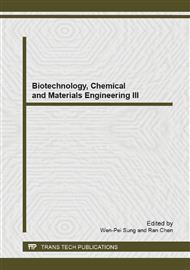p.450
p.455
p.459
p.465
p.471
p.475
p.481
p.485
p.490
Optimization of Fermentation Conditions for Chinese Fermentation Paocai with Enterococcus faecium IN3531 as a Starter by Single Factor Method
Abstract:
The strain Enterococcus faeciumIN3531, a bacteriocin producer, was used as a starter culture for traditional fermentationpaocai in china. By single factor experiment, the technological conditionsof Chinese fermentation paocai using Enterococcus faecium IN3531 as a starterwere optimizated, andparameters of optimization included the initial saltconcentration, the inoculum size, the fermentation temperatureand the ratio of material to liquid. Theresearch results showed that,the suitable fermentationconditions were the initial saltconcentration of 2%,the inoculum size of 3%, the fermentation temperature of 37 °C, the ratio of materialto liquid of 30%, fermentation time of 108 hours. Titratable acidity in fermentationterminus was 0.80%.
Info:
Periodical:
Pages:
471-474
Citation:
Online since:
January 2014
Authors:
Price:
Сopyright:
© 2014 Trans Tech Publications Ltd. All Rights Reserved
Share:
Citation:


